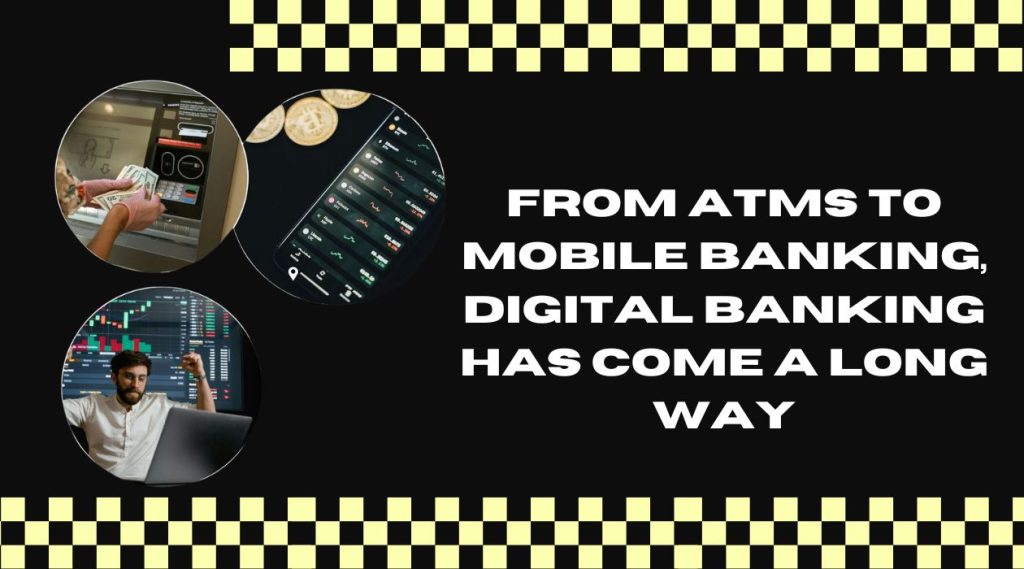The world of banking has undergone a digital transformation over the past decade.
The market of the global digital banking platform is set to reach $13.9 billion by 2026, experiencing a growth of 11.3% CAGR. The demand for digital banking has reached so high that 82% of millennials are ready to switch their banks if the current one doesn’t offer the latest technologies of mobile and digital banking. Further, according to the American Banker’s Association, 71% of customers prefer to take banking services digitally (through mobile apps or computers).
As financial institutions adapt to changing consumer behaviors and preferences, digital banking interfaces (user experience (UX), user interface (UI) design), and user acceptance testing (UAT) have become pivotal in shaping the future of digital banking.
Today’s banking customers expect seamless, intuitive, and personalized experiences across web and mobile apps. They demand the same level of usability they get from leading tech companies. Banks that fail to deliver positive UI/UX risk losing customers to more design-focused competitors.
This article explores the key trends in UI/UX that are revolutionizing digital banking. We’ll examine how improved onboarding, navigation, security features, and omnichannel integration are transforming the customer journey. UI/UX has become essential for banks to provide delightful experiences, build brand loyalty, and attract digitally savvy clientele. With customers now valuing experience over products alone, UI/UX design is critical for banks to remain relevant and competitive.
The Evolution of Banking Interfaces
As we mentioned, the interfaces used for banking have come a long way over the past few decades. In the early days of banking, everything was done in person at a physical bank branch. There were no ATMs, no phone banking, and no mobile apps. The teller line was the only interface available for conducting transactions.

The first major evolution in banking came with the introduction of ATMs in the 1970s. This groundbreaking innovation marked the advent of digital transformation in banking, providing customers with the convenience of withdrawing cash, checking balances, and conducting other basic transactions without having to visit a branch. The ATM served as the initial digital interface for banking customers to interact directly with their accounts, albeit with somewhat limited functionality.
The next wave of innovation came in the 1990s with the rise of phone banking and early internet banking websites. Banks realized that developing interfaces beyond physical locations was critical for customer convenience and retention. This allowed for features like transferring funds, bill pay, account management, and more.
However, phone and early web interfaces lacked the intuitive, user-friendly design that we expect today. They could have been clearer and easier to navigate for many customers. That set the stage for the mobile revolution of the late 2000s.
The introduction of banking apps for smartphones completely transformed the banking interface. Touch screens, digital wallets, biometric logins, and seamless user experience design made mobile banking not just usable, but preferable for most customers.

Today, banks continue to optimize their interfaces across platforms. Mobile responsive sites, AI chatbots, embedded banking, and other emerging tech continue to shape the future of how customers interact with their finances digitally.
A few mobile banking apps that are widely used today are:
- Chime with 12 million users in the US
- Monzo with over 4 million users (mainly teenagers and adults) in the UK
- Nubank in Latin America with 40 million users
- N26, a German NeoBank with 7 million users
- Starling Bank with 1.4 million users in the UK
All these mobile banking apps have top-notch UI/UX and design features. To be precise, user experience is now at the core of banking technology development and innovation.
And why is that? Scroll on!
Why UI/UX Matters for Banking
The key is to help customers complete their banking activities fast, conveniently, and effectively. With such easy-to-use self-service options, the need for manual labor is lowered, thus reducing costs. Further, streamlines interfaced allows for the introduction of new revenue features, thus increasing the bottom line for banks. Ultimately, it is beneficial for both parties – banks and their customers.
To sum up, the reasons why user interface and user experience design are critical for digital banking:
Invoke Trust and Credibility
Banking is built on trust. Customers need to know their money and data are safe and secure. A polished, intuitive interface establishes credibility and makes customers feel like they can rely on the bank’s services. Simple, clean designs, consistent branding, and professional visuals convey competence and attention to detail. This provides reassurance and confidence.
Ease of Use
Banking interfaces must be straightforward to use. Customers visit banking sites for utilitarian purposes like checking balances, paying bills, transferring funds, etc. The interface should enable users to complete tasks quickly and painlessly. Removing friction, minimizing steps, and streamlining flows are essential. Consistent navigation, clear CTAs, and visibility of key info also contribute to usability.
Accessibility
Digital banking must accommodate users of all abilities. Following accessibility guidelines ensures interfaces work for those with disabilities. Support for screen readers, color contrast, keyboard navigation, and closed captions enables more customers to use banking services independently. Accessibility is also important for senior citizens who may have declining vision or motor skills. Banking truly needs to work for everyone.
Key UI/UX Trends in Banking
Banking interfaces have undergone a digital transformation in recent years thanks to advancements in UI/UX design. Here are some of the key trends shaping the future of banking experiences:
Simplicity and Minimalism
In response to crowded and complex legacy interfaces, many banks are now embracing simplicity and minimalism. This includes decluttering screens, using plain language, and streamlining navigation. The goal is to help customers find what they need quickly without getting overwhelmed. Clean, sparse interfaces communicate refinement and build trust.
Personalization and Customization
Banks are getting better at using data and AI to provide tailored experiences. Customers can set preferences, get personalized content recommendations, and customize interfaces. Features like saved themes, smart defaults, and adaptive layouts cater to individual needs. Personalization makes customers feel valued.
Omnichannel Integration
Leading banks deliver unified experiences across web, mobile, ATMs, branches, and call centers. Omnichannel integration enables seamless switching between touchpoints while retaining context. This convenience satisfies customers who expect consistency. Shared data and digital-first strategies are key enablers.
Conversational Interfaces
Chatbots and voice assistants are making inroads in banking for automated service interactions. These conversational interfaces leverage NLP to deliver an intuitive self-service experience. Customers appreciate the 24/7 availability and human-like dialog. Scalability is a major benefit for banks.
Accessibility
Accessible design is gaining prominence to serve users with disabilities or special needs. Efforts include screen reader compatibility, keyboard navigation, captions/transcripts, legible fonts, color contrast, and more. Beyond being ethical, accessibility widens the customer base and boosts adoption.
By focusing on these UX priorities, banks can provide delightful customer experiences that build loyalty and brand value. The digital-first future calls for interfaces that are personalized yet consistent, simple yet functional.
What areas call for improvement in digital banking interfaces?
Now that you are aware of the reasons for upgrading banking interfaces and focussing on UI/UX, let us turn to the areas that need these improvements on priority. Onboarding, navigation optimization, personalization, and multichannel experiences are a few of the prioritized areas that we will discuss here.
Improving Onboarding
One key area, where banks focus their UI/UX efforts is improving account onboarding experience. The goal is to make signing up for a new account as quick and painless as possible. Here are some of the main ways banks are optimizing onboarding:
Streamlining Account Signup
Banks are streamlining signup forms and reducing the amount of information required upfront. Rather than forcing users to fill out long, complicated forms, banks now take a stepped approach and gather additional info later after the core account is set up. This reduces friction and gets users up and running faster.
Guided Tutorials
Interactive tutorials guide users through the process of setting up an account step-by-step. Tips and instructions are provided in context to make things clear. Some banks gamify the process with progress bars and celebratory messages upon completion.
Progress Trackers and Checklists
Visual trackers show users their progress through the onboarding flow. Checklist items get marked off as each step is completed, providing a sense of accomplishment. This improves the user experience and reduces dropoff rates during onboarding.
By focusing on optimizing these key aspects of onboarding, banks can increase account signup conversion rates significantly. A smoother, faster onboarding process leads to higher customer satisfaction and engagement right from the start.
Optimizing Navigation
Navigation is crucial for helping users easily find what they need in a banking app or website. With the wealth of features and information available, optimized navigation ensures customers can quickly access accounts, make payments, find help articles, and more through intuitive and adaptive interfaces.
Some key navigation trends in banking UI/UX include:
- Intuitive menus and sitemaps – Well-organized main menus, footer links, dashboard layouts, and sitemaps provide an at-a-glance overview of site content, allowing customers to orient themselves and locate desired pages. Nesting submenus under main items also helps break down options.
- Contextual help and search – Smart search bars and contextual help menus provide assistance right when and where customers need it. Search anticipates typos and returns the most relevant results. Contextual help displays FAQs, tutorials, or definitions tailored to the current page.
- Adaptive interfaces – Responsive sites detect device types and orientation, adapting layouts and components for optimal viewing and usage on smartphones, tablets, laptops, and desktops. Key info is prominently placed while secondary content gets tucked away to prevent clutter.
These navigational best practices reduce the friction customers experience. Thoughtful information architecture and UX writing ensure people can find their way around easily. Context-awareness helps prevent confusion and dead ends. Responsive designs provide convenience. With intuitive navigation optimized for their needs, customers enjoy self-sufficient banking journeys.
Enhancing Security
Banks have always prioritized security, but the rise of digital banking has prompted an even greater focus on protecting customer data and transactions. UI/UX design plays a key role in balancing robust security with an excellent user experience.
One important trend is the expanded use of biometrics, passkeys, and other advanced authentication methods like fingerprint and facial recognition for account login and transaction authorization. Passkeys, in particular, offer a secure and convenient alternative to passwords, reducing the risk of breaches. These technologies enhance security while also streamlining the user experience compared to traditional passwords or PINs. However, the UI must be intuitive to set up and use biometrics and passkeys seamlessly.

Visually masking sensitive information like account numbers is another technique to improve security. Banks can display the last 4 digits but obscure the rest to prevent exposing full account data. UI animations can transition between masked and visible states during transactions.
Multi-factor or two-factor authentication has also become commonplace for many banking activities. However, the UX must guide users through the additional steps without excessive friction. Options like push notifications and embedded fingerprint readers create smoother 2FA experiences.
Overall, banks are collaborating closely with UX designers to develop creative ways to implement robust security protections without negatively impacting usability and convenience for customers. Biometrics, data masking, and refined two-factor authentication point to the future of balancing security and experience in banking interfaces.
Personalization and Customization
Personalization and customization are key focuses in modern digital banking interfaces. Banks are increasingly using data and algorithms to provide tailored recommendations and relevant insights to each user.
For example, some banks may analyze spending patterns and recommend saving goals, budgeting tools, or personalized investment options. Others are exploring customized dashboards that highlight accounts, bills, and spending categories most relevant to each user.
Banks are also enabling greater user control over preferences and settings. Users can set personalized alerts for account balances, large transactions, due dates, and more. Dashboards and menus can be rearranged and customized. Color schemes, shortcuts, and nicknames can be configured per user preferences.

The goal is to provide an experience akin to a personal financial assistant. Recommendations are timely and tailored, but users still have transparency and control over their data. Customizable dashboards reflect individual priorities and needs.
As digital banking advances, personalization and customization will be key to driving user engagement. Users expect and demand relevant, intuitive experiences. Banks that leverage data responsibly to provide personalized insights and customization will have a competitive edge.
Integrated Omnichannel Experiences
Banks are working to create a seamless experience for customers across all touchpoints, whether online, mobile, phone, in-branch, or ATM. The key is developing an integrated omnichannel approach that provides a unified experience.
This starts with consistent branding, visual design, and tone across web, mobile, ATM, and in-person interactions. Navigation, workflows, and features should be standardized so customers feel comfortable regardless of channel.
Contextual personalization also enhances omnichannel experiences. For example, if a customer starts an application on the web, the process should pick up seamlessly on mobile. Or if they ask a question by phone, the answer is logged to inform future interactions.
Integrated data and analytics connect insights across touchpoints as well. This allows banks to track full customer journeys, offer individualized recommendations, and provide consistent experiences based on preferences and history.
The omnichannel approach creates a seamless, customized, and efficient experience. Customers appreciate the continuity and banks benefit from deeper engagement across channels.
The Future of UI/UX in Digital Banking
The future of banking interfaces will likely see increased adoption of new technologies like voice assistants, augmented reality (AR), and virtual reality (VR). According to Forbes, 99% of all banking interactions these days are remote. You need not talk to a banker to get your job done today. No wonder 84% of young customers root for innovations in digital banking, as it makes the services easily accessible and streamlined. Forbes also mentions that integrating generative AI with sales & marketing, and customer interaction can boost revenue by nearly 6% in the next few years.

Let us now talk about a few trends that will shape the digital banking UI/UX landscape in the coming days.
Voice Interfaces and Conversational UI
Voice user interfaces are becoming more prevalent, providing hands-free and eyes-free experiences. Banks have already started experimenting with voice assistants like Alexa and Siri to provide basic account information and perform simple transactions. In the future, conversational UI will allow more complex banking tasks through natural dialogue. Customers may be able to apply for loans, transfer funds, and get personalized financial advice simply by having a conversation with their bank’s intelligent assistant.
AR/VR Interfaces
Augmented and virtual reality also have intriguing applications in banking. AR could overlay account information and notifications as you walk by a bank branch or ATM. VR interfaces may transport users to a personalized virtual bank environment for engaging, interactive experiences. As AR/VR technology matures, it has the potential to enhance banking in new immersive ways greatly.
Predictions for Banking in 10 Years
In 10 years, the banking experience may be almost unrecognizable compared to today. Physical bank branches will likely decline further as more users rely entirely on mobile and online banking. Banking apps may integrate digital assistants, letting customers manage finances conversationally. Biometrics like face and voice recognition could replace passwords and PINs for authentication. The customer experience will be hyper-personalized with relevant insights and recommendations tailored to each user. While the future is uncertain, banks that focus on customer-centric UI/UX innovations will be best positioned to adapt to users’ changing needs over the next decade.
Final Thoughts
As the banking interfaces develop and improve in the coming years, customers will be more than glad to use banking services more frequently, thus increasing the business’ bottom line. Some of the digital transformations that will shape the banking interfaces are the integration of AR/VR and Conversational UI, not to mention generative AI in sales, marketing, and other customer-interaction areas. There will also be drastic improvements in cybersecurity, navigation, and overall personalization to enhance onboarding and make it hassle-free as much as possible.
So have you upgraded your banking interface yet? You can hire a proficient team to help you embrace the trends.